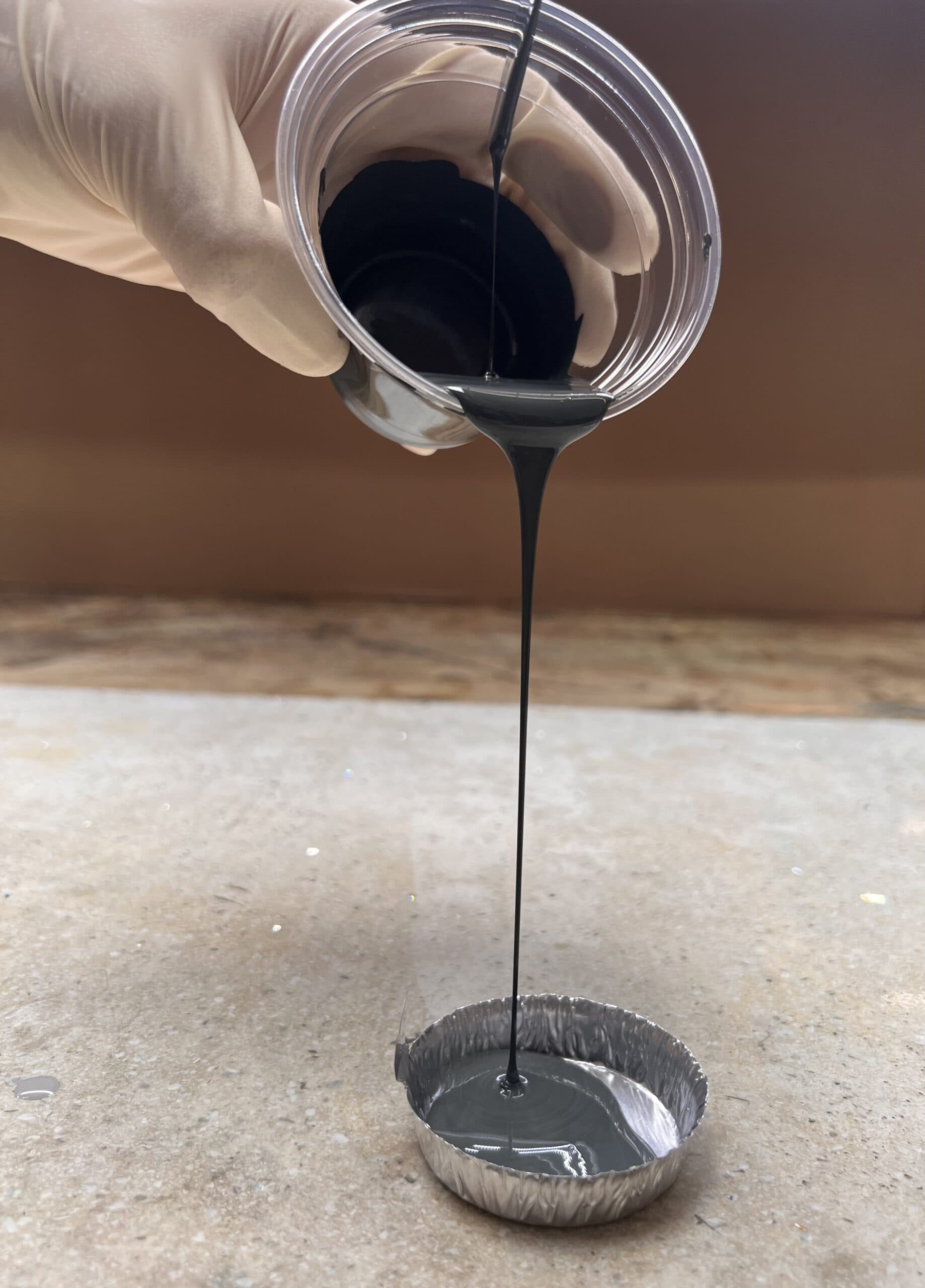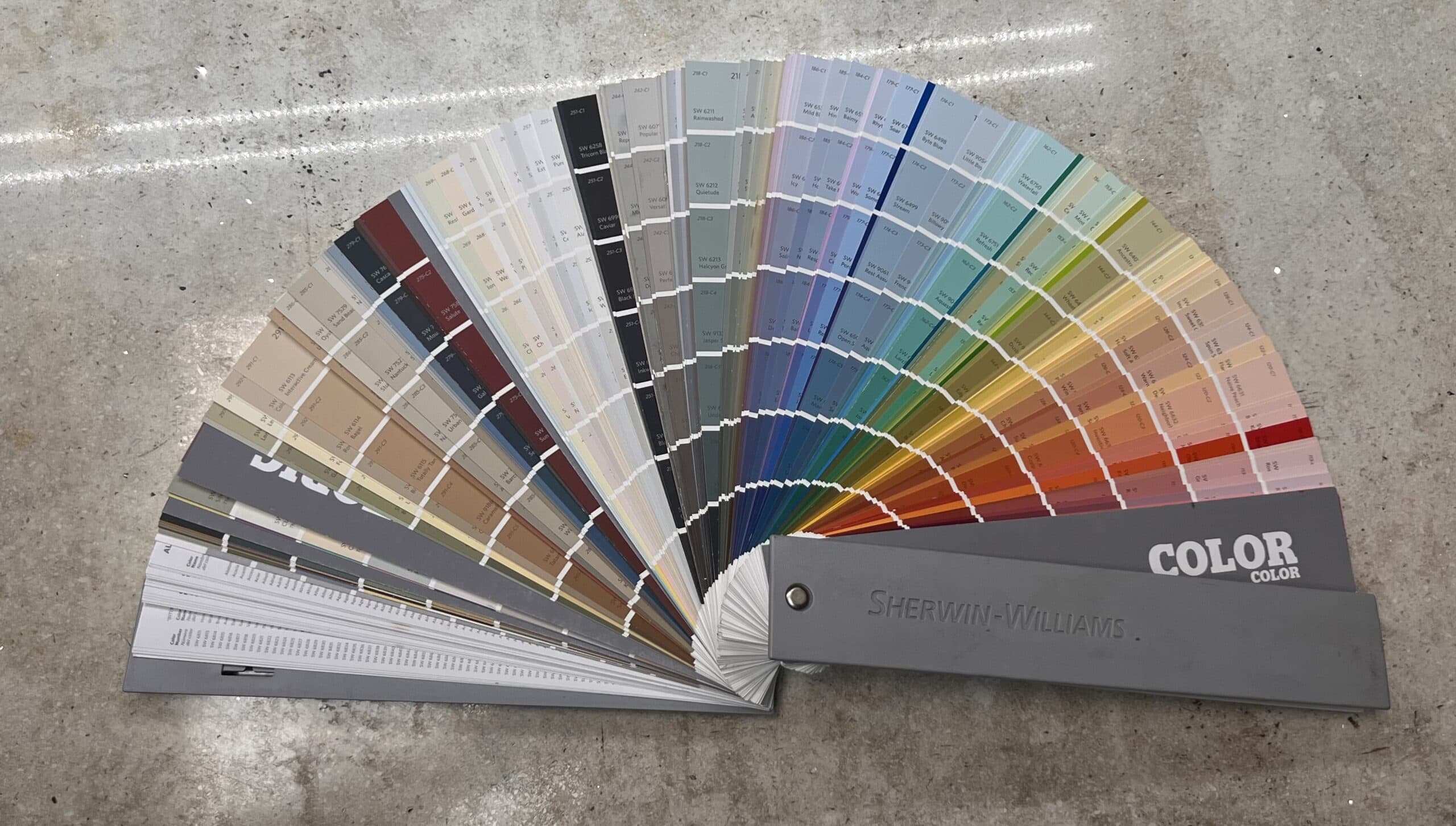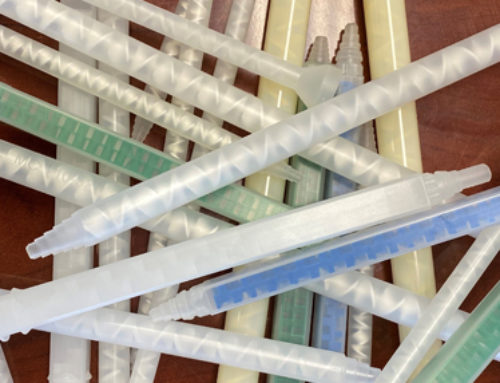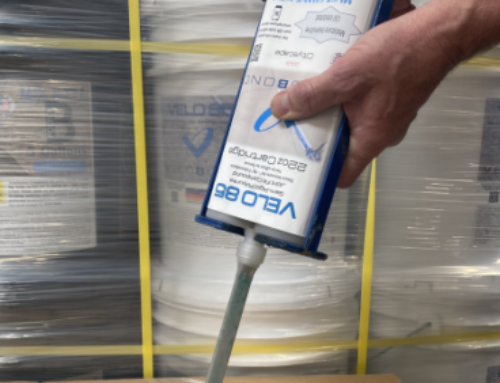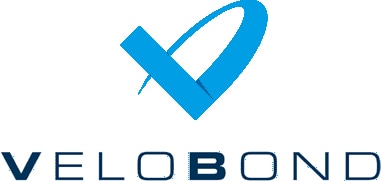Blog on Colors, by Doug Swanson:
Over 20 years ago, a contractor showed me a huge area of their warehouse stacked with leftover pails of polyurea joint fillers in a variety of colors. There were several shades of gray and many other colors. It took up valuable space, was hard to find matching colors to use again, and eventually the joint fillers would become stale dated and need to be properly disposed.
This is when a better idea was devised to offer pails of polyol un-tinted along with separate packages (typically called color packs, or tint packs) of any color to be mixed as needed. Contractors could then keep un-tinted joint filler in stock and order color packs as needed. Shipping color packs is much less than shipping 5-gallon pails of joint filler. If there is excess material from one job, it could be used on another job by adding a new color or the same color. However, not all contractors like this for several reasons such as: they mainly use one color for most of their jobs, they don’t like the extra step as it is easier to just open a pail and mix it, and there is always the problem/concern of lost or forgotten color packs.
The first containers I sourced were wide mouth plastic jars with screw on lids that were easy to open, pour into pails, and scrape out with popsicle sticks. They seemed to work well but one day, a customer needed more color packs because a jar popped open, and tint spilled all over everything in the box in which it was packaged. They said it happened quite often, and they just dealt with it. That’s when I found pouches that we could seal with a heat-sealing machine. They worked much better, but the guys I worked with then, (and still do today), Gavin, and Greg Baez, found some of the pouches we used with gussets would break open at the folds, and cutting open the corner of the pouch to squeeze the color out was very messy.
Our colorants are very specific pigments that are designed to become homogenous with our chemicals when mixed, but they get on everything and are hard to clean off. So, when VeloBond started, Greg thought the “Go-GURT” style of pouches (for kids to drink yogurt) would work better. He was right, they work great, and we continue to use them with minimal issues?
Most of us have gone to paint or big box stores and watch someone match our paint in minutes with their color matching machines. Making colors for chemicals is not so easy and you cannot simply use the same machines. The pigments are much thicker, and the best matches are truly made by the naked eye. It used to take about 6 – 7 colors to make a color, but our crew here has fine-tuned that to 3 colors most of the time. Less is more.
Another factor we deal with is the heat when curing, particularly with our very hard Shore D products (Bond 45, Bond 25, and Bond 10) which create much more heat than our softer joint fillers (Velo 85 and Velo 90). They are completely different animals. The excess heat (exotherms) caused by cross linking of chemicals creates heat when curing which causes a shift in colors, particularly with our Bond 45 product line. Therefore, our youngest and current primary color expert, Cris Ruiz, must predict which way the color will shift to get the best match upon final cure. This can take several attempts and possibly several days, but usually not. Cris, Greg, and Gavin are all experts and gifted with this ability to make colors and have literally made thousands of formulations over 25 years combined!
Even so, they will use color muse tools that are placed on the cured color samples to check how close they are to a match. These tools are like small cameras that give you color names, RGB’s and more, right on an app on your smart phone. Scroll down to “Custom Colors” on the main page of our website and look to the right. On this particular sample, the guys checked their work with the muse tool and the RGB numbers are almost identical. That is amazing when you consider our color matching is all done by the naked eye, not a computer!